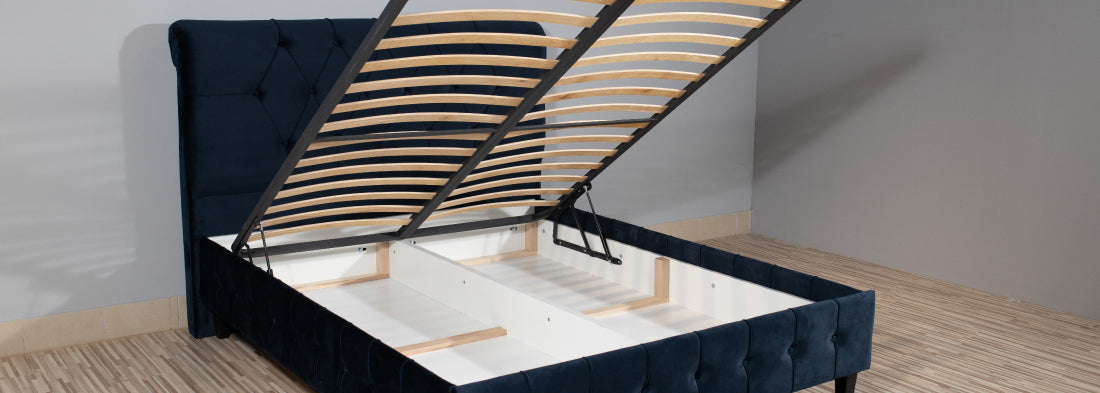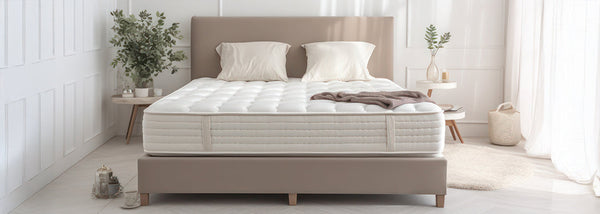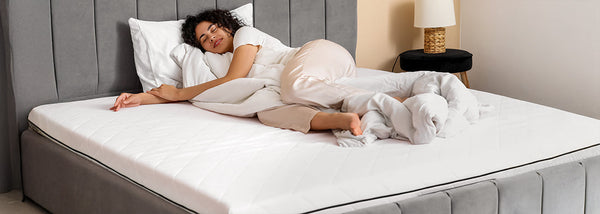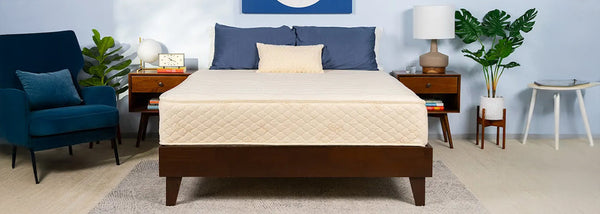Do Storage Beds Attract More Dust and Allergens?

In our constant pursuit of smarter living spaces, multifunctional furniture like storage beds has taken center stage. With rising urban density and smaller homes, combining utility with comfort is no longer a luxury—it’s a necessity. Storage beds are a prime example of this evolution. They maximize floor space, help reduce clutter, and offer a stylish solution to everyday storage challenges. From off-season linens to extra bedding, storage beds allow homeowners to make the most of limited square footage without compromising on aesthetics.
However, as we move toward cleaner, healthier living, one important question arises: Do storage beds attract more dust and allergens? It's a valid concern in today’s health-conscious world. With rising instances of allergies and respiratory problems, especially in urban areas where air quality can be poor, people are increasingly cautious about what they bring into their homes. It’s only natural to wonder whether the enclosed compartments beneath your mattress could be collecting more than just spare pillows.
It’s a fair concern. After all, enclosed spaces—especially those that remain untouched for long periods—can become breeding grounds for dust mites, mold, and allergens. For individuals prone to allergies, asthma, or respiratory issues, the cleanliness of their sleeping environment is non-negotiable. Your bed is where you spend nearly a third of your life, and its surroundings must be as hygienic as they are comfortable.
In this in-depth guide, we will explore whether storage beds compromise hygiene, how to mitigate any risks, and whether they can be part of a clean and healthy home environment. We’ll also discuss which designs and materials are best suited to avoid allergen buildup, how storage bed styles compare in terms of hygiene, and what maintenance routines are most effective for long-term cleanliness and peace of mind.
Are Storage Beds Hygienic?
Before jumping to conclusions, let’s first address the question: Are storage beds hygienic? The answer depends on multiple factors, including the bed's design, the material used, the type of storage, and—most importantly—how often it's cleaned. It's a myth that storage beds are inherently unhygienic; in fact, with the right choices and upkeep, they can enhance the cleanliness and organization of your living space.
Storage beds come with built-in compartments underneath the mattress base. These compartments can be accessed by lifting the mattress (hydraulic systems), sliding panels, or pull-out drawers. If these spaces are sealed well and cleaned periodically, they can be just as hygienic—if not more so—than open storage options that collect dust more easily. Closed compartments limit exposure to airborne particles, making them a preferable choice for storing bed linens, clothing, and seasonal items.
Moreover, many wooden beds, such as those made from Sheesham wood, naturally resist pests and mold due to their dense structure and natural oils. These beds often come treated with anti-fungal and termite-resistant coatings, which further enhance their suitability for long-term storage. Compared to plastic or metal-based alternatives, wooden storage solutions also provide better thermal insulation, reducing humidity build-up inside compartments—one of the key culprits for mold and dust mite proliferation.
In homes where maintaining hygiene is a priority—especially for families with children or allergy-prone individuals—wooden storage beds with proper sealing and smart ventilation offer peace of mind. The hygiene of your storage bed ultimately comes down to smart design, regular cleaning habits, and airflow management. Beds with slatted bottoms, for instance, promote airflow under the mattress, reducing heat and moisture that contribute to allergen build-up.
Are storage beds hygienic? Yes—provided you choose the right materials, use proper liners or bins inside the compartments, and incorporate regular vacuuming and airing out into your cleaning routine. With a little bit of planning and consistent care, your storage bed can be both functional and exceptionally hygienic.
The Connection Between Clutter and Allergens
One often overlooked fact is that clutter directly contributes to dust accumulation. The more things you leave exposed in your room—clothes, books, bedding—the more surface area there is for dust particles to settle. These particles can become airborne and trigger allergic reactions or respiratory issues, especially in individuals with sensitivities. Storage beds help reduce visible clutter, thereby minimizing dust-collecting zones and promoting a more streamlined, breathable living environment.
It’s worth noting that uncovered storage areas like open shelves often harbor more allergens than enclosed compartments. Items on open shelves or under open-frame beds are constantly exposed to air movement, which leads to more frequent dust build-up. With storage beds, especially those with hydraulic lift mechanisms, your belongings are sealed away from daily exposure to dust and dirt. This enclosed design provides an added layer of protection, ensuring that textiles like linens or winter wear remain cleaner for longer. It also deters pet dander, pollen, and airborne particles from settling on your stored items—something particularly valuable in households with pets or those located in urban environments with high pollution levels.
Therefore, if you're asking, are storage beds hygienic? the answer leans strongly toward yes, particularly when compared to traditional under-bed storage or open shelving systems. When paired with thoughtful organization, breathable containers, and regular cleaning habits, storage beds can become one of the most practical and hygienic furniture choices for modern living.
How to Keep Storage Beds Dust-Free
So, how to keep storage beds dust-free? The answer lies in combining smart maintenance practices with thoughtful organization. Keeping dust and allergens at bay doesn't require intensive effort, but it does call for consistency and some mindful choices when it comes to usage and cleaning.
- Vacuum Regularly: Use a vacuum cleaner with a HEPA filter to clean inside the storage compartments every few weeks. Dust mites and allergens thrive in undisturbed corners, so vacuuming even closed compartments helps control invisible buildup.
- Use Storage Bins: Plastic or fabric containers can help compartmentalize items and reduce direct exposure to dust. Airtight or zippered containers are especially helpful if you’re storing soft items like extra pillows or woolens. Labeled bins also make organization easier, ensuring items are stored away neatly.
- Use Linen Covers: Store items in fabric or zip-lock covers to keep them from attracting dust. Breathable linen covers are great for maintaining airflow while protecting your belongings.
- Choose Elevated Designs: Beds with a slight elevation from the ground improve airflow and reduce humidity build-up, which can otherwise contribute to mold and dust accumulation. They also make cleaning beneath the bed more manageable.
- Mattress Protection: Use a mattress protector that can be washed regularly to minimize dust accumulation on top. This also adds a layer of hygiene between the mattress and your sheets, which is especially useful in allergy-sensitive households.
Still wondering how to keep storage beds dust-free? Remember that your cleaning routine plays as important a role as the bed design itself. A simple habit like inspecting your storage compartments monthly can go a long way. Scheduling a thorough clean-up before seasonal transitions—when you’re already rotating linens or clothing—can help keep your storage bed fresh, functional, and allergen-free throughout the year.

Wooden Storage Beds vs Metal: Which Is Better for Allergies?
Let’s consider the pros and cons of wooden storage beds vs metal. Both materials have their benefits, but their effect on hygiene and allergen control can differ significantly depending on usage, climate, and maintenance habits.
Wooden Beds:
- Natural wood like Sheesham has anti-microbial and anti-fungal properties, making it a superior option for those sensitive to allergens.
- Solid wood construction is less prone to temperature fluctuations and condensation, which can lead to mold and mildew buildup—common issues in Indian homes with high humidity levels.
- Better insulation means less dust infiltration, and wooden surfaces don’t become as cold or moist as metal ones, reducing the risk of condensation-related allergens.
- High-quality wooden beds such as the Admire Sheesham Wood Bed with Storage offer both elegance and hygiene. Their robust construction also allows for better compartment sealing and smoother lift systems, reducing gaps where dust could settle.
Metal Beds:
- Easier to clean surfaces, often requiring just a wipe-down. However, they are more prone to rust if not powder-coated or treated with anti-corrosive finishes.
- Hollow metal parts can trap moisture, especially in humid climates, and if neglected, this can lead to mold or rust forming internally, which can be difficult to clean.
- Cooler surfaces can collect condensation, particularly when exposed to fluctuating temperatures. This can create a damp environment that invites dust mites and mold spores to thrive.
Overall, in the battle of wooden storage beds vs metal, wooden beds come out ahead in terms of long-term cleanliness and allergen resistance, especially in Indian households with variable humidity. Their natural material properties, combined with modern treatments, make them not only a hygienic choice but also a durable and visually appealing one for the modern bedroom.
The Best Storage Bed for Cleanliness
When choosing the best storage bed for cleanliness, look for features like smooth hydraulic lift mechanisms, tight-fitting lids, anti-bug finishes, and anti-fungal wood treatments. These elements not only enhance hygiene but also simplify maintenance, ensuring your bed remains a clean and dependable part of your home setup. Beds with soft-close hydraulic systems are especially beneficial, as they prevent dust from being stirred up every time you access the storage area.
Modern beds also come with ventilated bases that promote airflow and reduce odor build-up. These ventilation features are crucial in preventing musty smells and moisture-related issues that can occur when items are stored for long periods. Sheesham wood beds, in particular, are known for their longevity and ability to resist termites and other allergens naturally. Their dense grain and natural oils act as deterrents to mold and pests, making them an excellent long-term investment for cleaner living.
Another hallmark of the best storage bed for cleanliness is a design that allows for easy access and maintenance. The fewer the crevices and hard-to-reach corners, the easier it is to clean thoroughly. This ease of access also encourages more frequent cleaning, which is key to allergen control. Choosing beds with modular compartments or drawers can help you assign sections for different items, further boosting organization and hygiene. Additionally, modular designs often come with removable dividers or lined interiors, which help in isolating stored items and preventing cross-contamination of dust and allergens. All these features combined make these beds not just convenient, but also essential in creating a healthier and more manageable sleeping space.
Material Matters: Upholstered, Metal, or Wooden?
Upholstered beds look luxurious and add a plush, inviting feel to any bedroom. Their soft surfaces bring a cozy aesthetic, perfect for those who value tactile comfort and a high-end visual finish. However, they may require more maintenance compared to other materials. Their fabric surfaces can trap allergens like dust, pollen, and pet hair, which can accumulate over time and trigger respiratory discomfort if not regularly addressed. The porous nature of fabric also makes it susceptible to absorbing odors and spills. If you love the soft look, consider options like the cushion bed, but pair them with frequent vacuuming, lint rolling, and the use of removable, washable covers to maintain both hygiene and longevity. Using an upholstery-safe fabric protector can further help reduce staining and dust absorption.
Wood remains the most hygienic and low-maintenance material, particularly when it is naturally treated or polished with non-toxic finishes. Wooden beds are easy to clean with a simple wipe-down and don’t trap airborne particles the way fabric does. Their solid surfaces discourage dust mites and mold, especially in warm and humid climates. Metal works well for industrial-style interiors and is also relatively easy to maintain; however, it may not offer the same insulation or longevity as wood in humid climates. Metal surfaces can become cold and attract condensation, which over time may lead to rust or mold growth in crevices if not properly coated or ventilated. When it comes to balancing hygiene, comfort, and aesthetics, wood often presents the most reliable and enduring choice.
The Verdict: Are Storage Beds a Clean Choice?
Storage beds can absolutely be a clean and hygienic addition to your home—if chosen and maintained correctly. When thoughtfully selected, they serve as more than just storage solutions; they become instrumental in reducing dust-attracting clutter and improving the overall air quality of your space. Rather than attracting dust and allergens, they can help prevent them by minimizing exposed surfaces, sealing away infrequently used items, and creating a tidier, more controlled bedroom environment.
From smart organization to proper materials and regular cleaning, it’s possible to make your storage bed a healthy and efficient part of your sleep environment. Models made from treated hardwood with tight-sealing lids, moisture-resistant finishes, and elevated bases add another layer of defense against dust mites, mold, and mildew. Pair that with airtight containers or breathable fabric bins, and you're well on your way to maintaining a space that supports allergy-free, comfortable living.
So, if you're seeking a solution that combines elegance, comfort, and practicality, storage beds deserve serious consideration. They don’t just offer a clever way to store your belongings—they elevate your lifestyle by streamlining your environment. Choose wisely, clean consistently, and breathe easy knowing your home supports not just your comfort—but your health too. Investing in the right storage bed can mean fewer allergens, fewer irritants, and a more restful night’s sleep for everyone in the household.







